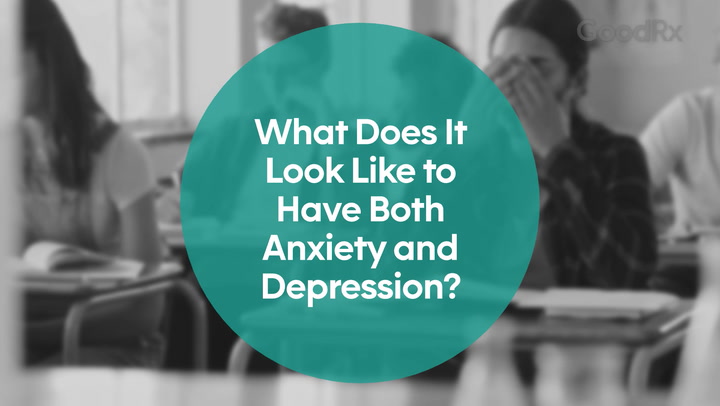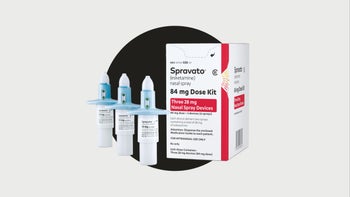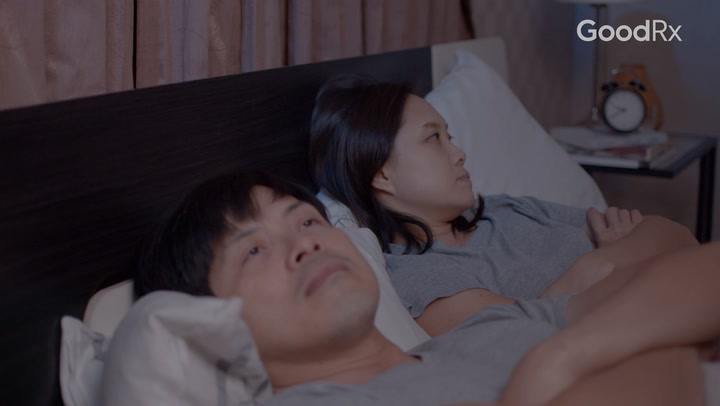
Effexor vs. Lexapro: 6 Things to Know When Comparing These Antidepressants
Key takeaways:
There are many medication options when it comes to treating depression or anxiety. Effexor (venlafaxine) and Lexapro (escitalopram) are two popular choices.
Effexor is a serotonin and norepinephrine reuptake inhibitor (SNRI). It’s FDA approved to treat several mental health conditions in adults, including depression, anxiety, and panic disorder. Most people take Effexor 1 to 3 times a day.
Lexapro is a selective serotonin reuptake inhibitor (SSRI). It’s FDA approved to treat depression and anxiety in children and adults. Most people take Lexapro once a day.
Most forms of Effexor and Lexparo are available as brand-name medications. But you can also find them as lower-cost generics. GoodRx may be able to help make your prescription more affordable.
Access savings on related medications
Table of contents

If you’re considering taking an antidepressant, you’re not alone. Nearly 1 in 8 people in the U.S. age 12 and older takes an antidepressant. There are many types of antidepressants available. Effexor (venlafaxine) and Lexapro (escitalopram) are two examples.
Below, you’ll find information about how Effexor and Lexapro compare. Both are first-choice medications for treating depression and anxiety. And while they have some similarities, they also have a number of differences. Here are six things you need to know when comparing Effexor versus Lexapro.
Good to know: The immediate-release (IR) version of brand-name Effexor is no longer available in the U.S. This dosage form is only available as generic venlafaxine. But many people still call this medication by its brand name. For ease of reading, we’ll use the name “Effexor” throughout this article when discussing the medication.
1. Effexor and Lexapro work in slightly different ways
All antidepressants work by balancing the levels of certain neurotransmitters (chemical messengers) in the brain. But Effexor and Lexapro affect different neurotransmitters.
Effexor is a serotonin and norepinephrine reuptake inhibitor (SNRI). It raises the levels of two neurotransmitters: serotonin and norepinephrine. Serotonin is believed to play a role in mood, sleep, and anxiety levels. Norepinephrine also helps regulate mood and anxiety. It may contribute to focus levels, too.
Search and compare options
Lexapro is a selective serotonin reuptake inhibitor (SSRI) antidepressant. It increases the amount of serotonin in the brain. But it doesn’t affect norepinephrine.
2. Effexor and Lexapro have different FDA-approved uses
Effexor and Lexapro both treat mental health conditions. But there are some key differences to know about their FDA-approved uses.
Effexor is FDA approved to treat these mental health conditions in adults:
Major depressive disorder (often shortened to “depression”)
Social anxiety disorder (SAD)
Different dosage forms of Effexor are approved for different conditions. All forms (immediate- and extended-release) are approved to treat depression. The extended-release (ER) capsules are also approved to treat GAD and panic disorder. And the ER capsules and tablets are both approved for SAD.
Lexapro is approved to treat these mental health conditions in children and adults:
Depression in people age 12 and older
GAD in people age 7 and older
Antidepressants for anxiety: Effexor (venlafaxine) and Lexapro (escitalopram) are both approved to treat anxiety. Find out how they work and what to expect.
Selective serotonin reuptake inhibitors (SSRIs) vs. serotonin and norepinephrine reuptake inhibitors (SNRIs): Learn more about how these two types of antidepressants compare.
How to know your medication is working: Experts discuss the top signs that your antidepressant is working — and what to do if it’s not.
Your prescriber may recommend taking Effexor or Lexapro for a condition not listed above. Both medications have off-label uses that are supported by clinical evidence. Examples of off-label Effexor uses include hot flashes and obsessive-compulsive disorder (OCD). Some off-label Lexapro uses include SAD, OCD, and panic disorder.
3. Effexor and Lexapro take about the same amount of time to start working
When it comes to antidepressants, patience and consistency are key. You can expect to feel the full benefits of Effexor or Lexapro after taking your medication daily for about 4 to 8 weeks. But you may start to feel some symptom relief during the first 1 to 2 weeks of treatment.
Some studies have shown that Lexapro may start working slightly faster than Effexor. In these studies, people taking Lexapro for depression reported more improvement in their mood after 1 week than people taking Effexor. But the medications are similarly effective in the long run. And experts don’t recommend one over the other.
4. Effexor and Lexapro come in different dosage forms
Effexor and Lexapro come in different dosage forms. How the medications are taken can also differ.
Effexor comes as oral tablets and capsules in the following forms:
Immediate-release (IR) tablets
Extended-release (ER or XR) tablets
ER capsules
Most people take Effexor IR tablets 2 to 3 times a day. The ER tablets and capsules are usually taken once a day.
Lexapro is available as oral tablets and an oral liquid. Both forms are typically taken once a day.
5. Effexor and Lexapro have similar side effects
Effexor and Lexapro share similar side effects. With both medications, the side effects tend to be worse when first starting treatment or if you raise your dosage. But in many cases, the side effects will get better or go away as your body adjusts to the medication.
Common side effects of Effexor and Lexapro include:
Nausea
Headaches
Drowsiness
Dizziness
Constipation
Dry mouth
Anxiousness
Insomnia
Changes to appetite
Sexual side effects, such as erectile dysfunction
Effexor and Lexapro both have a boxed warning — the FDA’s most serious warning for medications — for suicidal thoughts and behaviors. These serious side effects are rare. But your risk is greater if you’re under age 25. It’s also higher during the first few weeks of starting either medication or shortly after a dosage increase. Get help right away if you notice sudden changes in your mood or worsening symptoms.
If you or someone you know is having thoughts of suicide, you’re not alone, and help is available. Call the National Suicide Prevention Lifeline at 988, or text “HOME” to 741-741 to reach the Crisis Text Line.
6. Effexor and Lexapro have similar interactions
Effexor and Lexapro also have similar interactions with other medications. Some of these interactions can be managed with dosage adjustments. But some combinations should be avoided completely.
Below are some medications and substances that can cause Effexor and Lexapro interactions:
Monoamine oxidase inhibitors (MAOIs)
Other antidepressants
Triptan migraine medications, such as sumatriptan (Imitrex)
Certain opioids, including tramadol (Conzip, Qdolo)
Blood thinners, such as rivaroxaban (Xarelto)
Be sure to share a list of your current medications with your healthcare team before starting any new medication. They can use this list to help you manage or avoid interactions.
Can you combine Effexor and Lexapro?
No, you shouldn’t take Effexor and Lexapro together. As mentioned above, both medications interact with other antidepressants, including each other. Combining Effexor and Lexapro can cause a rare but serious side effect called serotonin syndrome.
Serotonin syndrome can happen when there’s too much serotonin in the brain. Symptoms of the condition can range from mild to life-threatening. Notable symptoms include sweating, fever, and confusion.
Talk to your prescriber if you feel like Effexor or Lexapro alone isn’t working well enough. They can help you decide if additional treatment options or switching antidepressants might work for you.
How to save on Effexor and Lexapro
There are ways to save on Effexor and Lexapro. Most forms of Effexor and Lexapro are available as brand-name medications. But you can also find them as lower-cost generics.
GoodRx can help you navigate ways to save on your prescription:
Save with a GoodRx coupon. GoodRx may be able to help you save over 55% off the average retail price of the generic versions of Effexor and Lexapro. With a free GoodRx coupon, the cost of 60 tablets of 75 mg generic Effexor may be as low as $14.24 at certain pharmacies. And 30 capsules of 150 mg generic Effexor XR may cost as little as $9.00. With a GoodRx coupon, the price for 30 tables of 10 mg generic Lexapro may be as low as $9.51.
Save with a copay savings card. If you have commercial insurance and meet the eligibility requirements, you may be able to get brand-name Effexor XR for as little as $4 per month using a savings card from the manufacturer.
The bottom line
Effexor (venlafaxine) and Lexapro (escitalopram) are two popular antidepressants. They’re both considered first-choice options for managing depression or anxiety. But they have some differences to keep in mind.
Effexor is a serotonin and norepinephrine reuptake inhibitor (SNRI). It’s FDA approved to treat more conditions than Lexapro. But it’s only approved for use in adults. Lexapro is a selective serotonin reuptake inhibitor (SSRI). It’s FDA approved to treat depression and anxiety in children and adults.
Effexor and Lexapro cause similar side effects, such as nausea, headaches, and dizziness. They also have similar drug interactions. Your prescriber can help you decide which one may be right for you.
Why trust our experts?



References
Advagen Pharm. (2024). Venlafaxine hydrochloride capsule, extended release [package insert]. DailyMed.
Allergan. (2023). Lexapro - escitalopram tablet, film coated [package insert]. DailyMed.
Amneal Pharmaceuticals. (2024). Venlafaxine hydrochloride - venlafaxine tablet [package insert]. DailyMed.
BluePoint Laboratories. (2024). Venlafaxine hydrochloride - venlafaxine tablet, extended release [package insert]. DailyMed.
Endocrine Society. (2022). Adrenal hormones.
Landy, K., et al. (2023). Escitalopram. StatPearls.
Machado-Vieira, R., et al. (2010). The timing of antidepressant effects: A comparison of diverse pharmacological and somatic treatments. Pharmaceuticals.
McQuaid, J. R., et al. (2019). APA clinical practice guidelines for the treatment of depression across three age cohorts. American Psychological Association.
Pratt, L. A., et al. (2017). Antidepressant use among persons aged 12 and over: United States, 2011–2014. National Center for Health Statistics.
Rodriguez, C., et al. (2015). Clinical practice review for OCD. Anxiety and Depression Association of America.
Sheffler, Z. M., et al. (2023). Antidepressants. StatPearls.
Sheffler, Z. M., et al. (2023). Physiology, neurotransmitters. StatPearls.
For additional resources or to connect with mental health services in your area, call SAMHSA’s National Helpline at 1-800-662-4357. For immediate assistance, call the National Suicide Prevention Lifeline at 988, or text HOME to 741-741 to reach the Crisis Text Line.

























